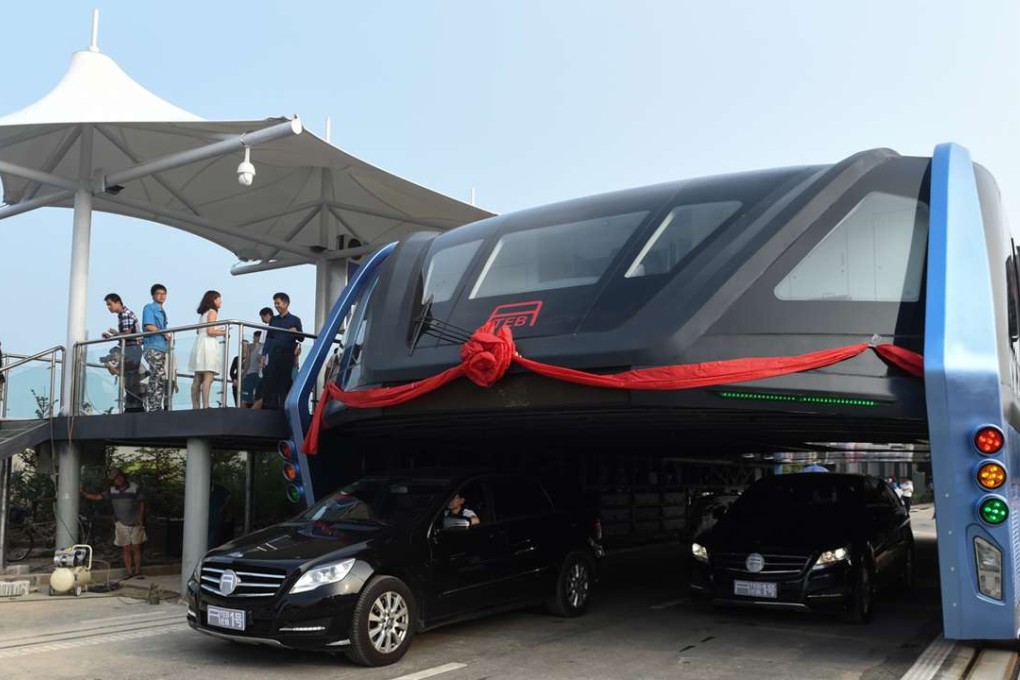Is China’s traffic-jam-busting ‘elevated bus’ just a pipe dream?
Experts have questioned the safety and feasibility of the vehicle under development, which aims to reduce road congestion by letting cars pass underneath

China’s “straddling bus”, trumpeted as an innovate idea to solve city traffic jams, is under increasing scrutiny with many questioning whether it is safe or feasible and will ever come into service.
The Transit Elevated Bus, or TEB, grabbed worldwide attention last week after China’s state-run news agency Xinhua published pictures of the vehicle during a test run on a 300-metre track in Qinhuangdao in Hebei province.
The bus is designed to run on rails and rises two metres above the road, allowing cars to pass underneath to ease congestion.
State media, however, have begun to grow cool on the idea with Xinhua suggesting last week the project was an excuse to raise funds rather than create an innovative solution to traffic problems. Experts have also questioned the safety and practicality of the technology.
The company says on its website that the bus-train hybrid is a “revolution” in public transport and “a breakthrough” in advanced manufacturing.
The biggest advantage of this project is that its designers have rich imaginations
But the South China Morning Post found only a solitary vehicle at the firm’s testing ground in Hebei, sheltered under a blue, iron shed.